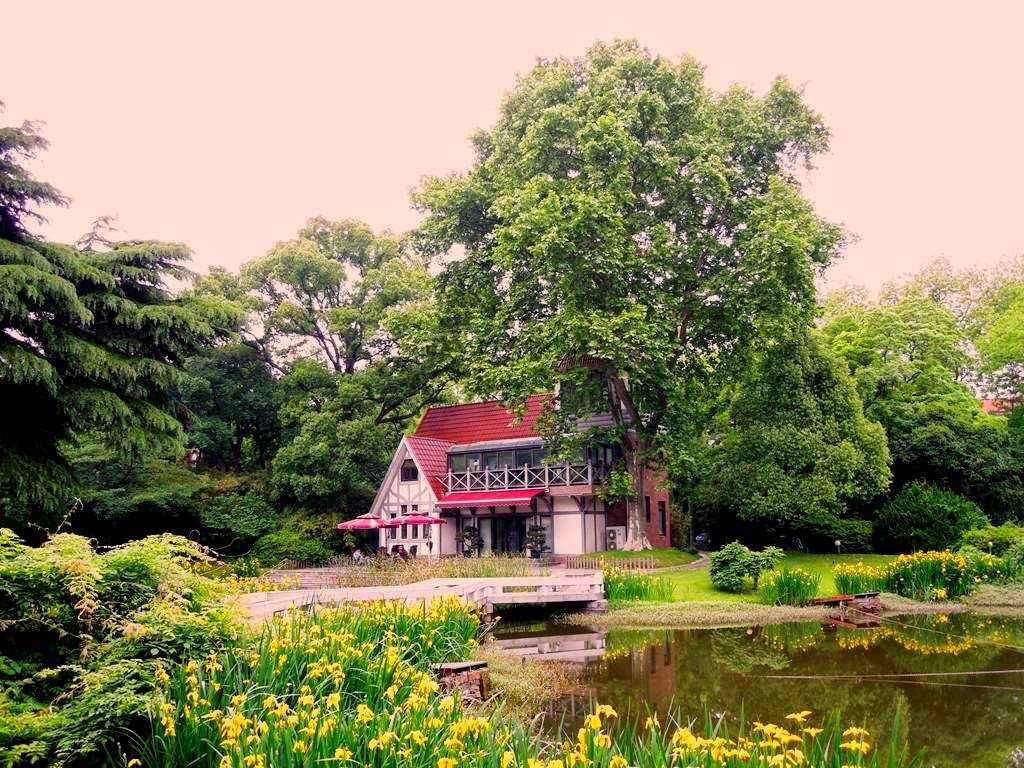What were the key features of the English Gardens during the Renaissance and how was the Italian influence present?
The English gardens had four different phases throughout the Renaissance period which lasted from 1485-1714. The English gardens had several different features among the four different phases. The Italian influence came into context in the Caroline phase of the English Renaissance gardens from 1625-1642.
Early Tudor-1485-1558
-water features and knot garden features

https://www.google.dk/search?q=early+tudor+english+gardens&espv=2&biw=1280&bih=622&source=lnms&tbm=isch&sa=X&ei=pvABVdzrEabmyQPEzIDADg&ved=0CAYQ_AUoAQ#tbm=isch&q=early+tudor+english+gardens+&imgdii=_&imgrc=LktsJhLiVBAFnM%253A%3BfbgxK02DPhY-BM%3Bhttp%253A%252F%252Fwww.coolgarden.me%252Fwp-content%252Fuploads%252F2011%252F11%252Ftudor-garden1.jpg%3Bhttp%253A%252F%252Fwww.coolgarden.me%252Fbeauty-of-english-tudor-gardens-39%252F%3B500%3B333
The Early Tudor highlighted the essence of "hortus conclusus" gardens, which were designed during the medieval times and meant for pleasure. This garden carried a royal French influence. This garden was meant to be for the pleasure and leisure time of King Henry VII. At this time, there were three royal gardens designed called the Hampton Court Palace, the Whitehall and the Nonsuch Palace. The location of these three gardens was important for their overall presentation. This location was intended for these gardens to be looked down upon in order to view their overall layout. This view was called the "piano nobile", which situated them underneath the state apartments of these three large royal gardens. Within all of these gardens, the main design previewed are termed knot gardens. They are intricate designs within the hedge. These gardens were also smaller which emphasized a more informal structure to the garden. However, there were typically four of these knot gardens surrounding a fountain which was placed in the middle. This highlighted more of a formal layout within the garden. Although it was small, it had a symmetrical layout with the four knot gardens and overall point of focus of the fountain.
The Elizabethan-1558-1603
-flowers with country home close by

https://www.google.dk/search?q=early+tudor+english+gardens&espv=2&biw=1280&bih=622&source=lnms&tbm=isch&sa=X&ei=pvABVdzrEabmyQPEzIDADg&ved=0CAYQ_AUoAQ#tbm=isch&q=elizabethan+english+gardens&imgdii=_&imgrc=i8pHpeHNLl4C_M%253A%3BY3KlOeNi3Mf47M%3Bhttp%253A%252F%252Fmedia-cdn.tripadvisor.com%252Fmedia%252Fphoto-s%252F02%252Fd5%252F77%252Fdc%252Felizabethan-gardens.jpg%3Bhttp%253A%252F%252Fwww.tripadvisor.co.uk%252FAttraction_Review-g186258-d214980-Reviews-Elizabethan_Gardens-Plymouth_Devon_England.html%3B550%3B411
The Elizabethan had a medieval influence through the variety of flowers throughout the garden. However, the Elizabethan were not used for practical reasons the way the herb gardens in the medieval times were. The flowers of the Elizabethan were utilized more for pleasure and beauty rather than medicines or cooking. This close proximity of the garden to the house allowed for appreciation of the beauty of the garden. This proximity between the two was very simple and allowed for privacy which took more of an overall informal structure. These gardens were privately used by the owners of the home. This garden incorporated a Netherlandish influence because of the idea of the house and garden placed close together. Although there was still the pleasurable element of the French influence, the pleasure garden shifted to featuring any country house. Similar to the Early Tudor, the knot gardens continued to remain an element within these Elizabethan gardens.
The Jacobean-1603-1625
-expansion of space of the house and garden
-grottoes, fountains

https://www.google.dk/search?q=jacobean+gardens&espv=2&biw=1280&bih=622&source=lnms&tbm=isch&sa=X&ei=hfgBVcv2E8H5yQOjvIDQDw&ved=0CAYQ_AUoAQ#imgdii=_&imgrc=9MFVFu1DL6liPM%253A%3BLuFBZaMG3AsRiM%3Bhttp%253A%252F%252Fwww.ethical-hedonist.com%252Fwp-content%252Fuploads%252F2010%252F08%252F212-Hatfield-House-Knot-Garden-GHS-ACE-500px.jpg%3Bhttp%253A%252F%252Fwww.ethical-hedonist.com%252Fan-afternoon-adventure-to-hatfield-house_277.html%3B500%3B330
The Jacobean gardens had a French and Danish influence through Henry, Prince of Wales and Anne, of Denmark. A garden revolution was sparked between these two individuals and called for an expansion of the Elizabethan gardens previously designed. The idea of the house and garden together was built off of the original Elizabethan and then added onto with different architectural touches such as grottoes and fountains. As the new garden revolution begun, a series of new gardens were built as well. Overall, the Jacobean gardens had an informal structure because it was still private and close to the house. However, there was a step towards formality through the expansion of the physical space of these gardens.
The Caroline 1625-1642
-gates
-villa style

https://www.google.dk/search?q=jacobean+gardens&espv=2&biw=1280&bih=622&source=lnms&tbm=isch&sa=X&ei=hfgBVcv2E8H5yQOjvIDQDw&ved=0CAYQ_AUoAQ#tbm=isch&q=english+gardens-caroline+with+gates&imgdii=_&imgrc=HbtvL70Yi81FQM%253A%3BI9hp_OFxFbq_7M%3Bhttps%253A%252F%252Fs-media-cache-ak0.pinimg.com%252F236x%252Ffa%252Fda%252F34%252Ffada34f969d0546e329436be76c8e121.jpg%3Bhttps%253A%252F%252Fwww.pinterest.com%252Fdouggreen%252Fgarden-gates-fences-walls-trellises-edgings-and-pa%252F%3B236%3B385

The English Caroline Gardens incorporated the Italian influence during the renaissance. Inigo Jones promoted the Palladian style that was heavily focused on the Italian style of the villa. The relationship between the villa and the garden was introduced during this phase of the English gardens. This adopted a larger garden that gave way to a more formal garden structure and layout. A new feature that was incorporated into these gardens were, gardens gates. These gates were designed by Inigo Jones himself and termed, "Jonesian". The gates provided a more detailed and pronounced entrance into one's garden and villa. These gardens were fancier than the previous gardens, especially the Elizabethan's.
The Formal garden 1660-1714
-Plainer grass
This garden was the last to develop of the Renaissance time period. This garden introduced a more formal layout through eliminating the idea of "flower grass". The simplistic and more symmetrical look was intended for these gardens. The landscape incorporated plainer grass which gave a larger and more professional look. These gardens shifted away from the small and private scale gardens to the larger and more public. These more public places could have helped to establish more social interaction as the Renaissance ended and a new era began.
